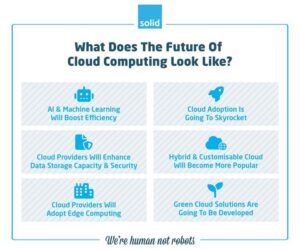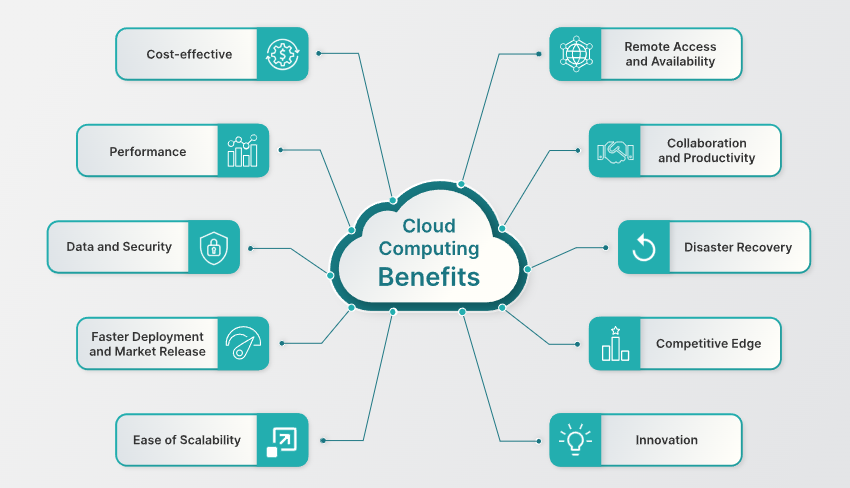Why Cloud Computing is Changing the Way We Work
Cloud computing has revolutionized the way businesses operate, collaborate, and grow in the digital age. By moving traditional software, storage, and computing power online, the cloud enables companies of all sizes to streamline processes, reduce costs, and enhance productivity. In this comprehensive guide, we explore the transformative impact of cloud computing on modern workplaces. Learn how cloud-based solutions allow for real-time collaboration, secure data storage, and flexible remote work options. Discover the benefits of adopting cloud computing for businesses, from increased scalability and cost-efficiency to improved data security and disaster recovery. Whether you’re a business owner, IT professional, or simply curious about the future of work, this article provides valuable insights into why cloud computing is reshaping business landscapes worldwide stay competitive in the digital age.
Cloud computing is transforming the modern workplace, offering powerful tools and solutions that enable businesses to operate more flexibly and efficiently. In this guide, we’ll explore key tips and tricks to help companies maximize their use of cloud technology. Learn how cloud solutions can support seamless remote work, real-time collaboration, and secure data storage. Discover best practices for choosing the right cloud services, protecting sensitive information, and scaling operations with cloud-based tools. Whether you’re navigating cloud adoption for the first time or looking to enhance your current setup, these practical tips will help your business fully leverage cloud computing’s capabilities.
Cloud computing has revolutionized modern workplaces, enabling flexibility, efficiency, and scalability like never before. By offering on-demand access to computing resources, it allows businesses to reduce costs, enhance collaboration, and streamline operations. Employees can work from anywhere, leveraging tools and data stored in the cloud, fostering remote work and global collaboration. As a result, businesses are shifting away from traditional IT models, embracing cloud-driven innovation to stay competitive in a fast-paced digital era.

1. Choose the Right Cloud Platform
- Evaluate Needs: Determine if you need a public, private, or hybrid cloud. Public cloud platforms like AWS, Azure, and Google Cloud offer flexibility, while private clouds may be better for sensitive data.
- Integration: Ensure your chosen platform integrates smoothly with existing tools and systems.
2. Enhance Collaboration and Productivity
- Shared Documents: Use cloud-based tools like Google Workspace or Microsoft 365, allowing multiple users to work on documents in real time.
- Communication Tools: Leverage cloud-based communication apps like Slack or Microsoft Teams to keep everyone connected, especially in remote or hybrid work settings.
3. Improve Security and Compliance
- Regular Updates and Backups: Schedule automatic updates and backups to ensure data protection.
- Data Encryption: Implement data encryption for secure data transfer and storage.
- Access Controls: Use tools like multi-factor authentication and access controls to limit data access to authorized users only.
4. Optimize Cost Management
- Analyze Usage: Monitor your cloud usage to avoid overpaying for unnecessary resources. Many platforms offer cost-analysis tools for tracking expenses.
- Auto-scaling: Take advantage of auto-scaling features to allocate resources dynamically based on demand, preventing idle resources and cutting costs.
5. Utilize Automation
- Workflow Automation: Automate routine tasks (e.g., reporting, backups, system maintenance) to streamline operations and improve efficiency.
- DevOps Integration: Consider using CI/CD tools in cloud environments for faster development, testing, and deployment.
6. Plan for Disaster Recovery
- Data Recovery Solutions: Set up automatic data backup and recovery solutions within your cloud provider to minimize data loss.
- Redundancy: Implement redundancy by storing data in multiple regions to protect against localized outages.
7. Leverage AI and Analytics
- Data Insights: Use AI-powered analytics tools offered by cloud providers for data-driven decisions.
- Customer Experience: Apply AI to personalize customer interactions, using insights from cloud-stored customer data.




